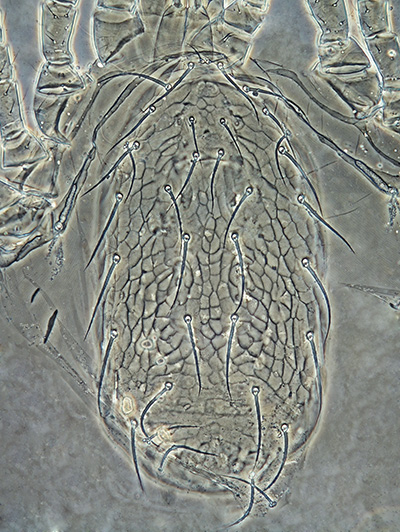Other Names
- Typhlodromus occidentalis Nesbitt, 1951
- Typhlodromus (Typhlodromus) occidentalis Nesbitt
- Typhlodromus (Galendromus) occidentalis Nesbitt
- Galendromus occidentalis (Nesbitt)
- Metaseiulus occidentalis (Nesbitt)
- Metaseiulus (Galendromus) occidentalis (Nesbitt)
Synonyms
none
Distribution
North and South America: Canada, USA, Venezuela, Chile; Asia: China, South Korea, Taiwan; Europe: Netherlands, Russia; Middle East: Jordan, Israel; South Africa (Moraes et al., 2004); Australia: ACT, NSW, Queensland, Victoria (Schicha, 1987; Moraes et al., 2004); New Zealand (Collyer, 1964; 1982).
Notes
An organophosphate resistant (OP-resistant) strain of G. occidentalis was introduced from the USA and widely released in Australia in 1972 as a control measure against two-spotted mite (Schicha, 1987). Starting from 1976, the OP-resistant G. occidentalis (the USA strain, via Australia) was released throughout New Zealand on various fruit and berry crops, hops, and vines (Collyer, 1982). However, even prior to that introduction, G. occidentalis was collected in several locations in Australia and New Zealand, usually on fruit trees (Collyer, 1982; Schicha, 1987).
References
Collyer, E. (1964) The occurrence of some mites of the Family Phytoseiidae in New Zealand, and descriptions of seven new species. Acarologia 6: 632-646.
Collyer, E. (1982) The Phytoseiidae of New Zealand (Acarina). 1. The genera Typhlodromus and Amblyseius - keys and new species. New Zealand Journal of Zoology 9: 185-206.
Moraes, G.J. de, McMurtry, J.A., Denmark, H.A., and Campos, C.B. (2004) A revised catalog of the mite family Phytoseiidae. Zootaxa 434: 1-494.
Schicha, E. (1987) Phytoseiidae of Australia and Neighboring Areas. Indira Publishing House, Oak Park, Michigan, USA. 187 p.
